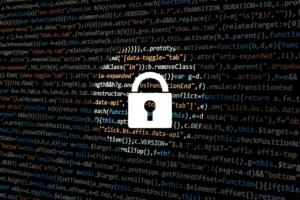The Significant Risks of the Remote Desktop
Are you one of the millions of Americans who are now working from home? Or have you been working from home for awhile? Either way, it is likely that you are using some type of remote desktop protocol. If you are, there are some things that you should be aware of.
 None of us believe that we will be hacked, but we have seen over and over again that it is possible. Even the biggest companies out there have been hacked, and a small company is even more at risk of this. Add the use of a program called Remote Desktop offered by Microsoft or Google Chrome or many other third-party remote access programs, and you need to be aware of some things.
None of us believe that we will be hacked, but we have seen over and over again that it is possible. Even the biggest companies out there have been hacked, and a small company is even more at risk of this. Add the use of a program called Remote Desktop offered by Microsoft or Google Chrome or many other third-party remote access programs, and you need to be aware of some things.
Essentially, Remote Desktop allows you to access a computer remotely. It might be in your home or your office, and you can give access to others who are also working remotely in the form of a “remote assistance scam”. However, when you give access, or have this access, your network may be wide open for hackers. There have been thousands and thousands of cases where people have become victims of various remote desktop/remote assistance scams, and if a hack is successful, it can destroy a small business, wreck a persons bank account or lead to identity theft.
What is Remote Desktop?
Remote Desktop is a very common software, and if you work on a computer with Windows, you probably have this program, and you don’t even know it. Though it’s a great tool, it is not as secure as it should be.
Criminals are well-aware of this, of course, and they have worked to create a number of tools for hacking into the software. When they get access to networks, the hackers can also access company info and steal things like login information. Once they have this information, the hackers can buy and sell them so other hackers can use them. Once they are in, they have access to anything and everything on the network.
You are at Risk
It is estimated that there are more than 3 million businesses out there that have access to Remote Desktop. Most of these are small businesses, and many of them manage their own IT services. If you own a small business and you have an IT department, you fall into this category. Additionally, hackers know that these companies are weaker, and they target businesses like this…and any company that has Remote Desktop is also a target.
What You Can Do About It
At this point, you are probably wondering what you can do to protect your company or yourself from hackers who like to use Remote Desktop to access networks. Here are some tips:
- If you don’t use Remote Desktop, you should remove it from your computer.
- Make sure that when there is a Windows Update, that you update it as soon as you possibly can. It’s possible that this update could have a security patch that is imperative for keeping hackers out.
- Ensure that your wireless connections are encrypted, and also password protected.
- If you want to keep Remote Desktop, you can, but choose to only use it on a computer that is running on a VPN, or virtual private network.
- Use a firewall, too, so you can restrict access.
- Another thing you can do is set up two-factor authentication.
- Beware of any pop ups or phone calls that lead to someone requesting remote access to our device.
- Understand that none of this is fool proof. The only way to totally protect yourself from hacks via Remote Desktop is to totally delete the program.
ROBERT SICILIANO CSP, is a #1 Best Selling Amazon author, CEO of CreditParent.com, the architect of the CSI Protection certification; a Cyber Social and Identity and Personal Protection security awareness training program.

 This is only one of the things that we are going to be facing in the upcoming year. Here are some more that everyone should be aware of:
This is only one of the things that we are going to be facing in the upcoming year. Here are some more that everyone should be aware of: There has been a lot of talk about fake news since the 2016 presidential election, and a lot of controversy from those who spread fake stories for the purpose of influencing hearts and minds and of course the outcome of the election. This is dangerous for dozens of reasons, many of which threaten our democracy and in many cases can lead to people getting killed which has happened many times this year.
There has been a lot of talk about fake news since the 2016 presidential election, and a lot of controversy from those who spread fake stories for the purpose of influencing hearts and minds and of course the outcome of the election. This is dangerous for dozens of reasons, many of which threaten our democracy and in many cases can lead to people getting killed which has happened many times this year.
 However, this didn’t happen without some ground rules, not only to keep the kids safe, but to make sure they don’t totally fall headfirst into cyberspace. Here’s some tips:
However, this didn’t happen without some ground rules, not only to keep the kids safe, but to make sure they don’t totally fall headfirst into cyberspace. Here’s some tips: You definitely don’t want anyone taking control of your screen or sharing information with the group. Thankfully, you can restrict this by controlling screen sharing.
You definitely don’t want anyone taking control of your screen or sharing information with the group. Thankfully, you can restrict this by controlling screen sharing. 

 Directions for Hacking are Easy to Come By
Directions for Hacking are Easy to Come By























